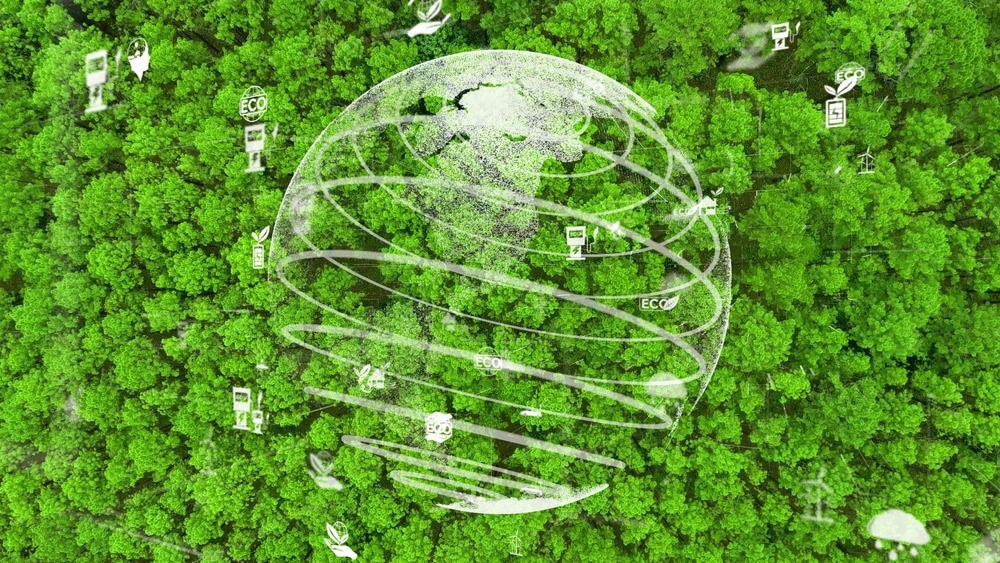The drive for a more environmentally friendly economy has accelerated in recent decades as the impact of climate change has become more apparent and obvious in our daily lives. It is now critical that we instill more sustainable approaches in all industries to tackle climate change and secure the planet's future.

Image Credit: Blue Planet Studio/Shutterstock.com
The bioeconomy is a key model for sustainable development. The United Nations Food and Agriculture Organisation describes the bioeconomy as "the production, use, and conservation of biological resources, including related knowledge, science, technology, and innovation to provide information, products, processes, and services to all economic sectors with the aim of moving towards a sustainable economy."
In the near future, our natural resources will become even more depleted, and the agricultural industry will find it increasingly difficult to produce enough food for the world's growing population. Climate change profoundly impacts primary production systems, including agriculture, forestry, fisheries, and aquaculture. To combat this, bioeconomies are being increasingly adopted to implement sustainable models that protect our food supply.
The bioeconomy: our chance to move away from fossil fuels
The term 'bioeconomy' has been used for many decades, first becoming popular at the turn of the millennium after it was adopted by the European Union (EU) and the Organisation for Economic Co-operation and Development (OECD) as a platform to encourage the integration of biotechnology into various applications and develop new products and markets. Following their adoption of bioeconomy, the Eu and OECD have launched numerous specific bioeconomy policies.
Take the EU Bioeconomy Strategy, for example; this policy governs sectors that rely on biological resources such as animals, plants, micro-organisms, and derived biomass. This specific strategy aims to protect the environment and prevent the overexploitation of the world's natural resources while enhancing biodiversity.
At its heart, the bioeconomy is an opportunity to harness the power of bioscience and utilize renewable resources to replace fossil fuels. It also offers countries a sustainable economic driver and reliable job creator for millions worldwide.
Over the coming years, the bioeconomy will likely help to develop novel solutions for the most pressing challenges in key industries such as agri-food, chemicals, energy, healthcare, materials, and fuel production.
Benefits of the bioeconomy
The benefits of adopting the bioeconomy are numerous. As well as its main advantage of helping to establish a sustainable future where we can rely less on fossil fuels and help to address climate change, it offers numerous other significant benefits. For example, the bioeconomy encourages collaboration between experts in different fields, as well as between stakeholders, which will help foster both innovation and cooperation on a global scale.
Additionally, the bieconomy will reduce greenhouse gas emissions, helping to reduce the carbon footprint of many industries. The bioeconomy will also reduce our reliance on non-renewable fossil fuel resources by shifting the energy sector and overhauling food production processes. The bioeconomy is also associated with smart management processes for natural resources, meaning they will be better protected.
The system also encourages research across disciplines, fostering innovation. Finally, the bioeconomy has the potential to generate employment opportunities in all regions, both rural and urban.
The Bioeconomy starts here!
Bioeconomy examples
There are multiple examples of the bioeconomy already at work. Food systems currently account for the largest niche within the bioeconomy field, such as sustainable agriculture, sustainable fishing, aquaculture, and forestry. Additionally, bioeconomy systems have been adopted in food and feed manufacturing processes.
Furthermore, bio-based products and bioenergy are also key examples of bioeconomy. Biomass, for example, is a renewable bioenergy source that is becoming increasingly popular due to its offering of improved security of energy supply and reduced reliance on fossil fuels.
The bioeconomy and food security
The bioeconomy will be a key tool for tackling food security issues. Due to climate change, agriculture is facing growing challenges in producing enough food to feed the population. This, coupled with the increasing number of people on the planet and, subsequently, increased competition for farming space, has reduced levels of global food security. As a result, the number of people going hungry each year is rising and has been exacerbated by the COVID-19 pandemic.
While numerous strategies have been devised to tackle this, these methods can only address part of the problem and have not seen widespread adoption so far. Strategies such as vertical farming that save land space and methods that reduce waste, like sensor technology and fruit and vegetable repurposing systems, can only tackle part of the problem.
To fully address food security problems, the entire food system must shift towards sustainable and cyclical processes. This can only be achieved via the widespread adoption of the bioeconomy by agriculture and all stakeholders.
Sources:
- Farcas, A., Galanakis, C., Socaciu, C., Pop, O., Tibulca, D., Paucean, A., Jimborean, M., Fogarasi, M., Salanta, L., Tofana, M. and Socaci, S., 2020. Food Security during the Pandemic and the Importance of the Bioeconomy in the New Era. Sustainability, 13(1), p.150. https://www.mdpi.com/2071-1050/13/1/150
- Sustainable and circular bioeconomy for food systems transformation [online]. FAO. Available at: www.fao.org/.../ (Accessed May 2022)
- von Braun, J., 2018. Bioeconomy – The global trend and its implications for sustainability and food security. Global Food Security, 19, pp.81-83. www.sciencedirect.com/science/article/abs/pii/S2211912418300865
- What is the Bioeconomy. [online]. European Commission. Available at: https://ec.europa.eu/research/bioeconomy/policy/bioeconomy_en.htm (Accessed May 2022)
Further Reading
Last Updated: Nov 8, 2022